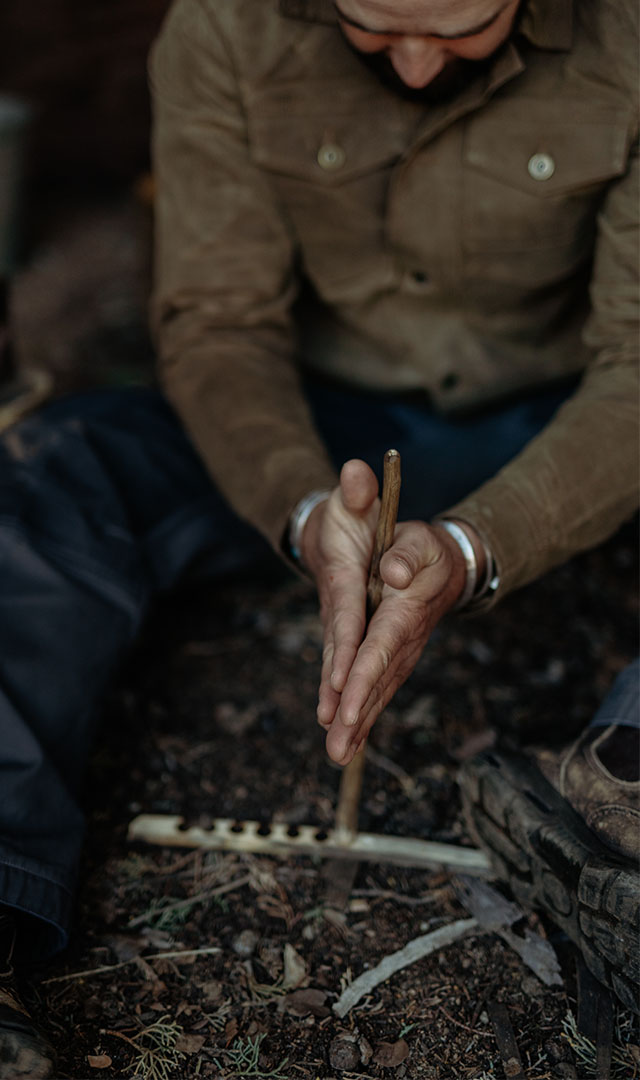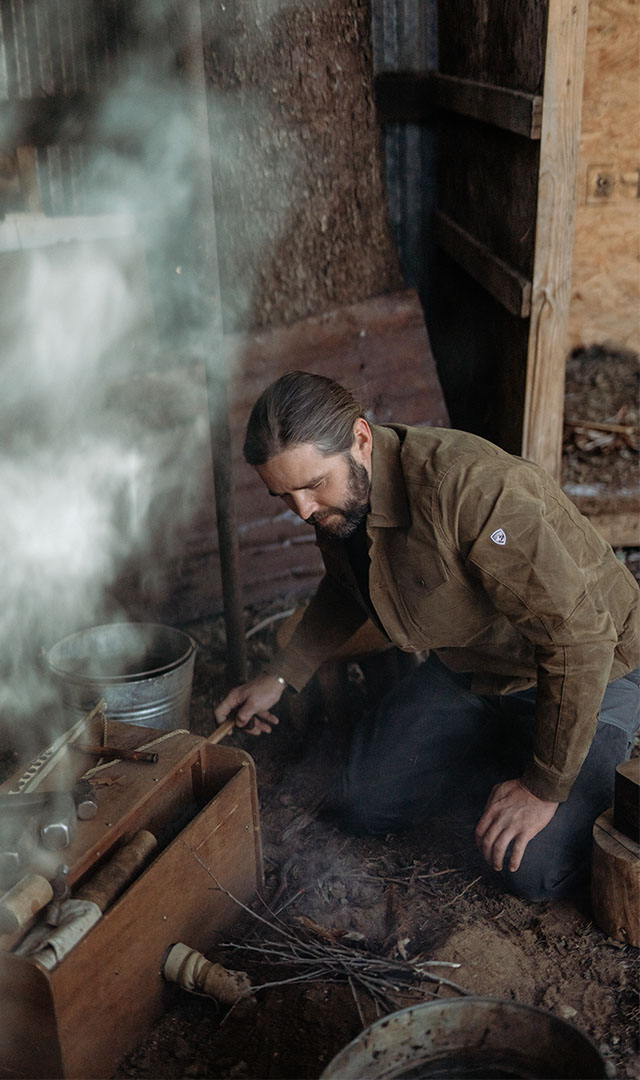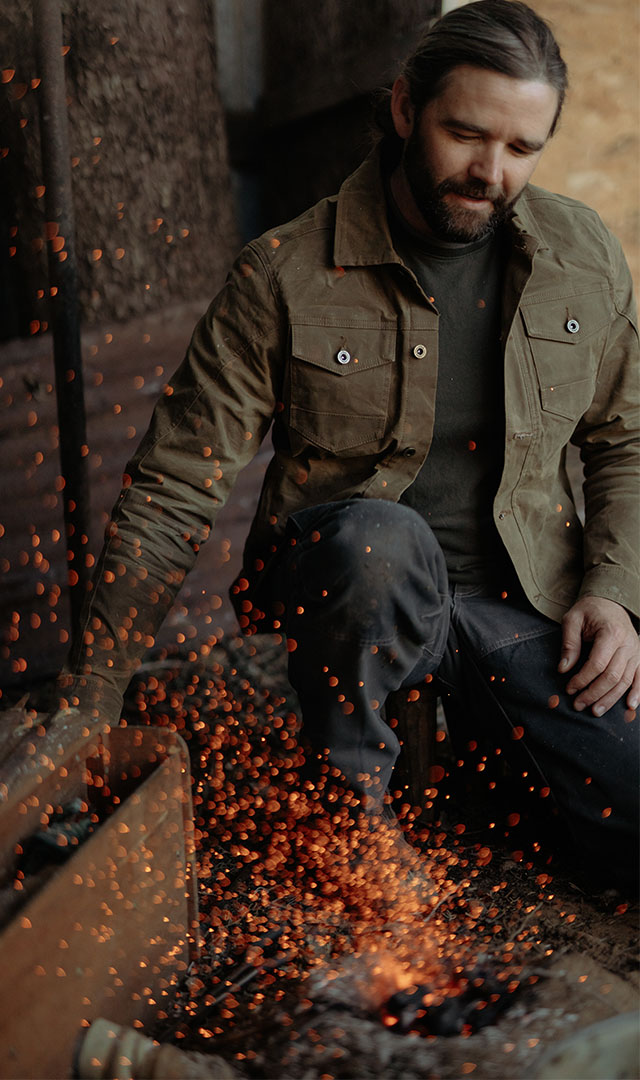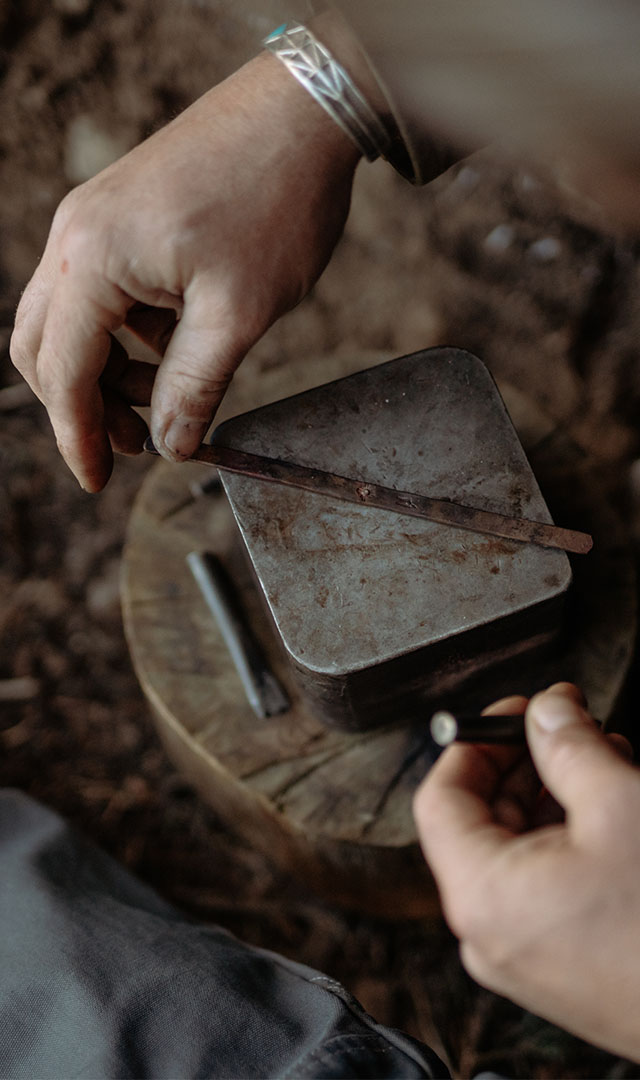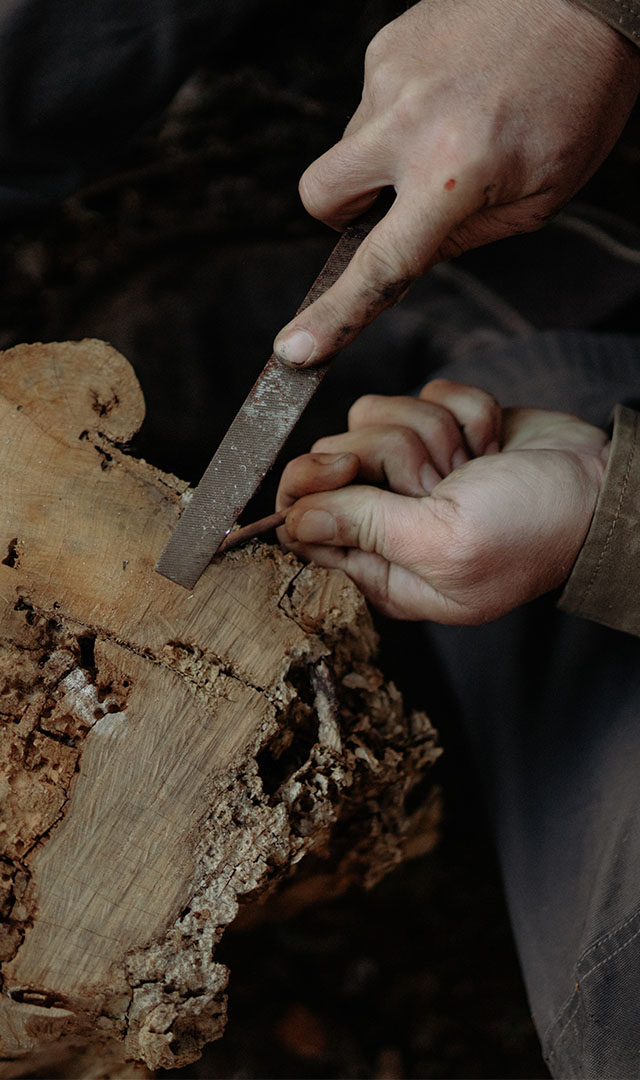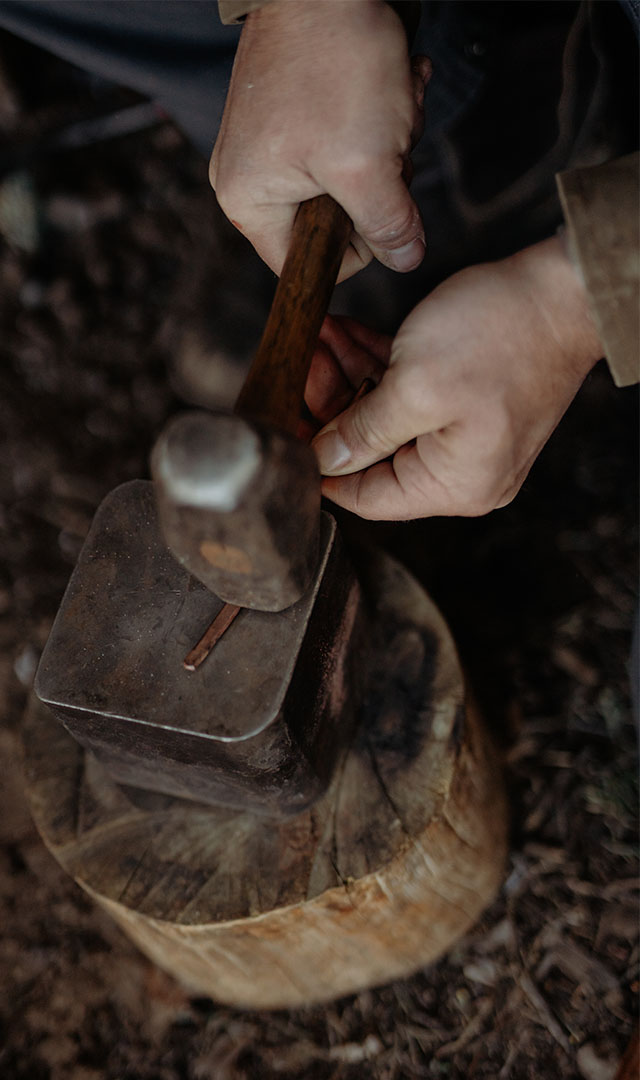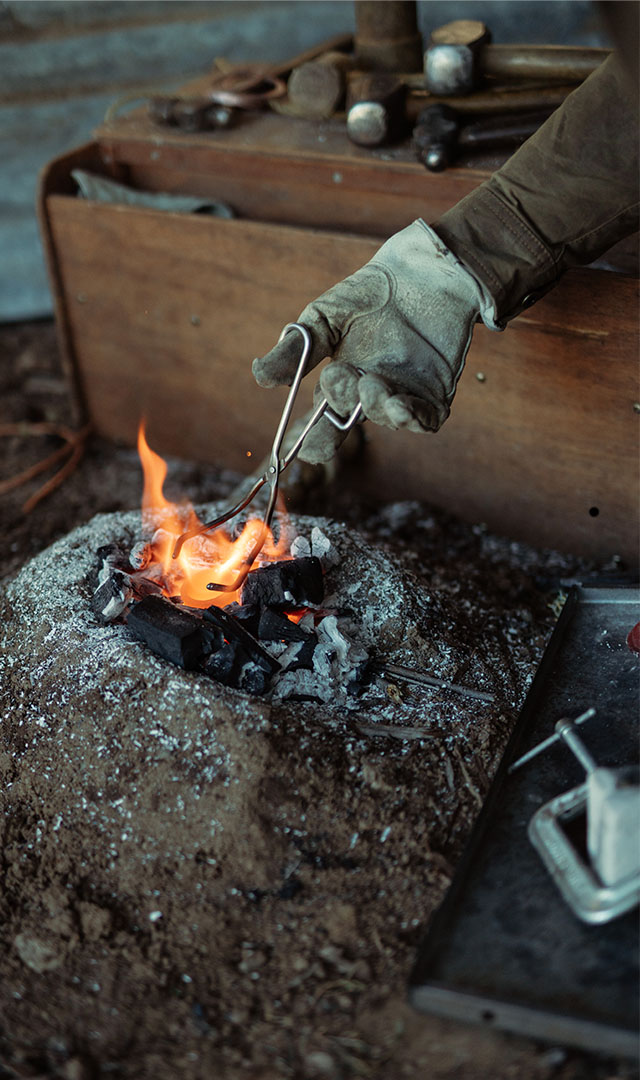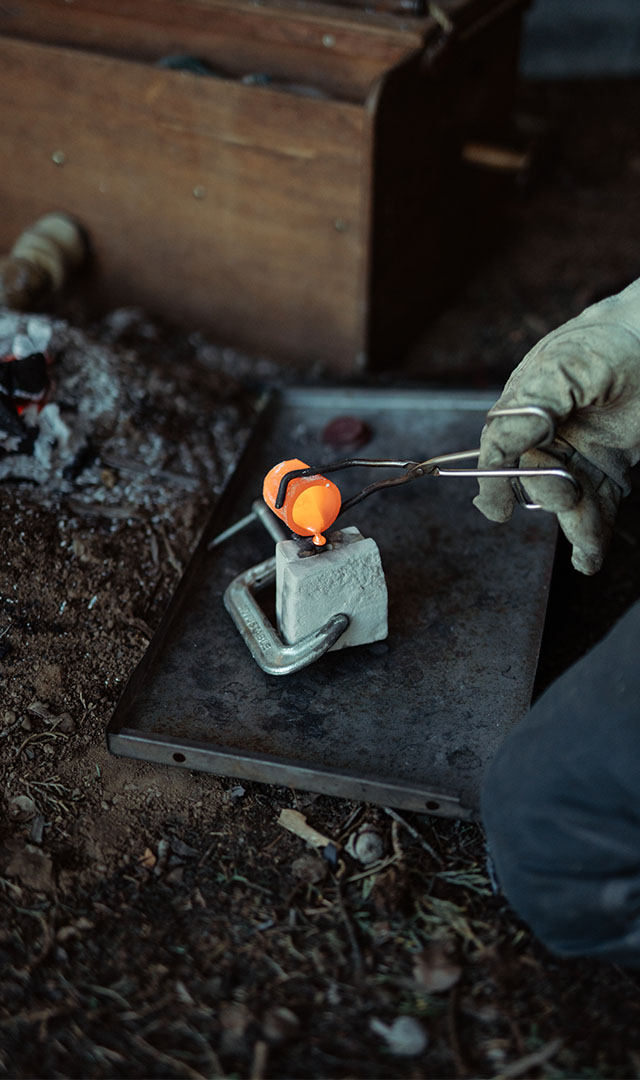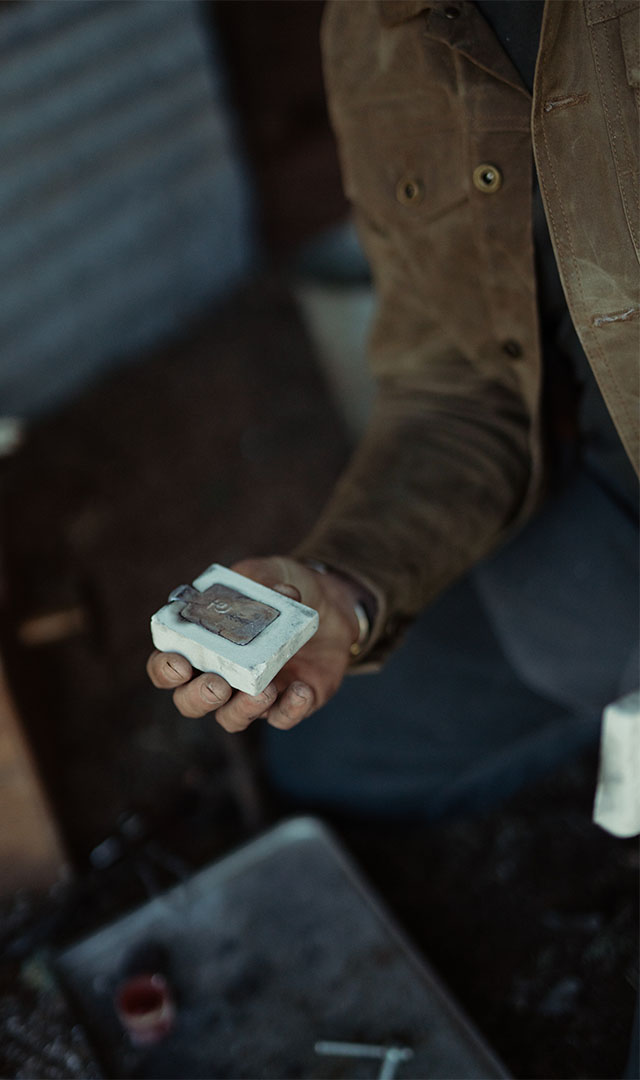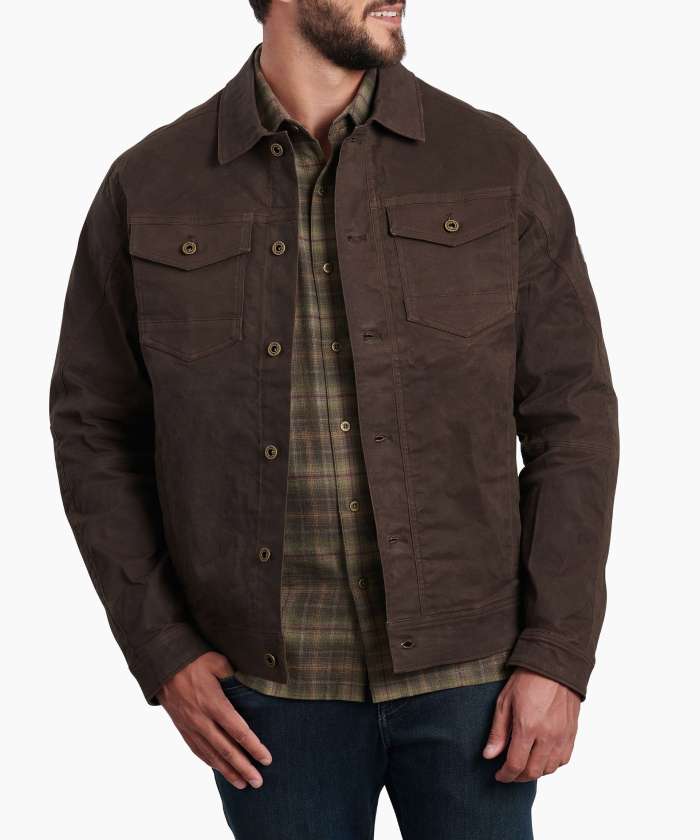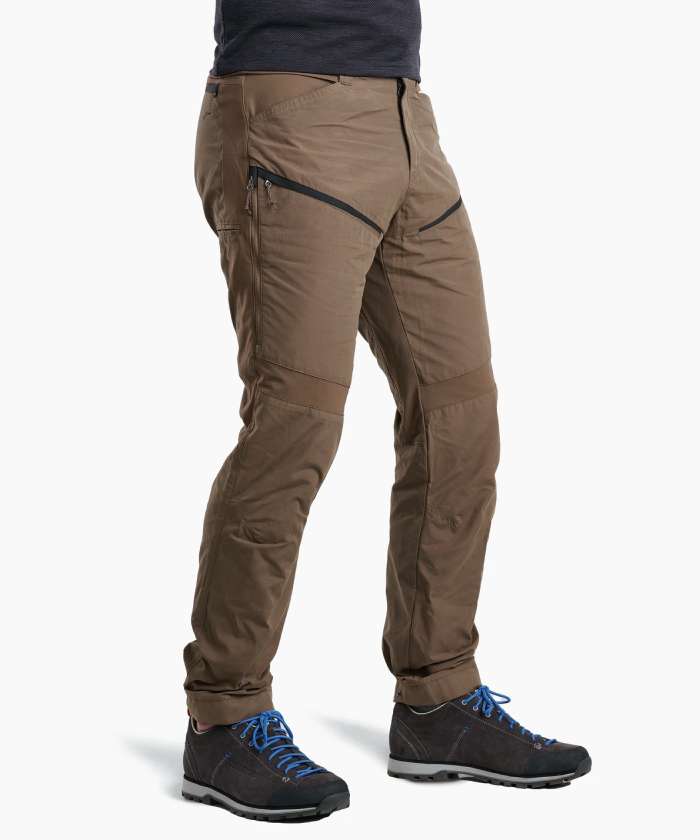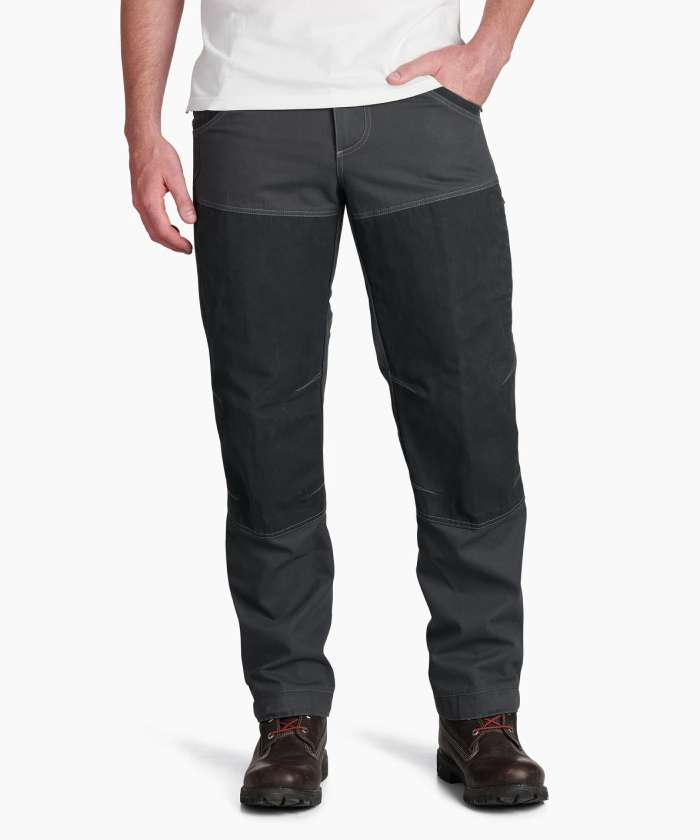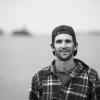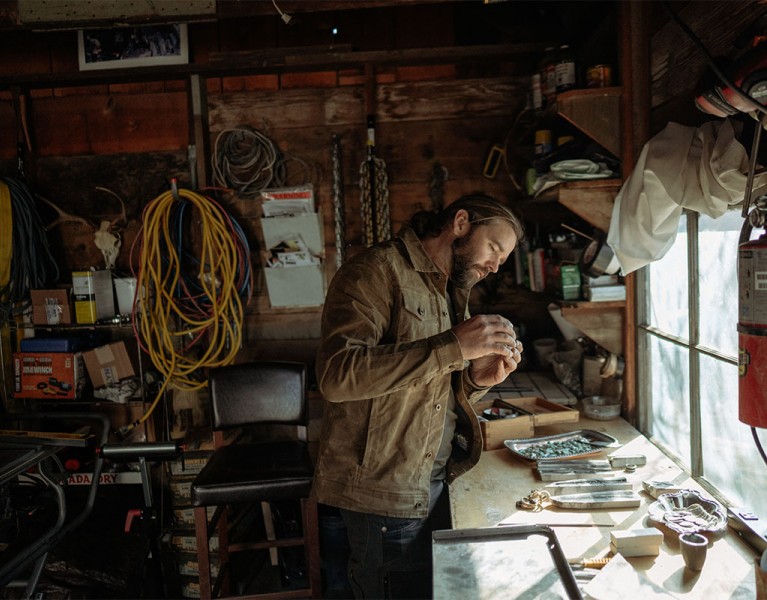
For the Love of The Process
Table of Contents [Show]
A Passion for the Craft
Tobias Corwin is a field biologist based in Prescott, Arizona. He specializes in researching and protecting the desert tortoise, a keystone species of the fragile southwest desert ecosystems he loves. When he’s not roaming the desert for his field work, he’s teaching primitive survival skills and resurrecting ancient jewelry casting techniques.
Beyond the Maker
This series from KÜHL goes beyond getting to know an artist's work and inspiration. We dive deeper into their origin stories and struggles to learn how they cope with failure, critics, and success, yet still find time to do the things they love. Born in the mountains, raised in the workshop—these are their stories.
For the Love of The Process
“What can bring more beauty to life?”
Tobias uses this question as his approach to life – it’s an intention that guides his passions and why he spends so much time on not just the act of making art, but on the entire process that comes beforehand.
Humans have an inherent desire to create beauty. It’s a privilege rewarded to a species who don’t have to spend every hour of the day simply surviving. Generally speaking, our needs are met – we have food, water, and shelter. This spare time affords us the opportunity to develop culture: art, music, dance and storytelling evolved from this down time.
For most of us, down time has turned into screen time; we don’t admire the stars at night with our screens so bright, and we’ve forgotten how, when and where the magic happens. Tobias wants to change that.
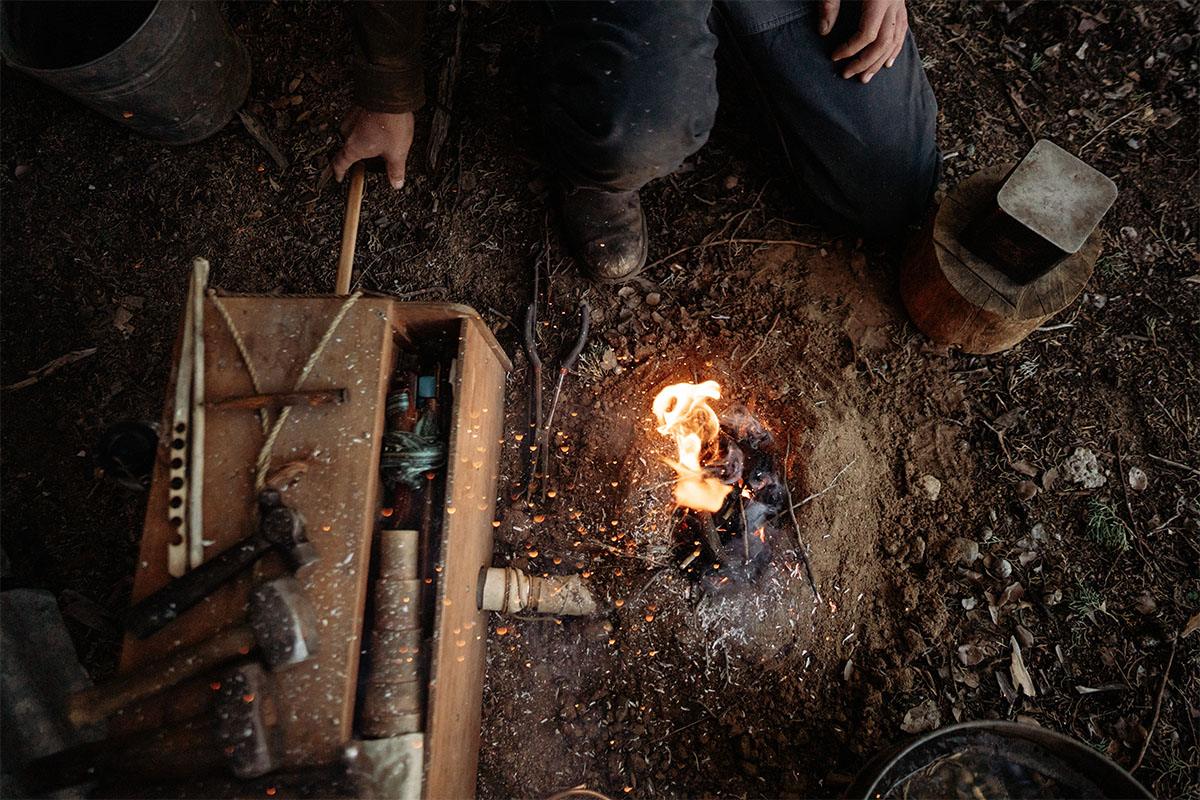
The Primitive Path
Tobias grew up outside of Albuquerque, New Mexico in the East Mountain region. His interest in everything outdoors began at a young age thanks to family members who shared similar passions. His first overnight backpacking trip was in Idaho at the young age of six, under the careful watch of his mom by his side.
Since then, he’s pursued a life grounded in the beauty and love of the outdoors. Growing up, he read extensively about primitive living and survival skills in boy scout and military books. It wasn’t until college when he met people who shared these passions that his interest really took off.
When he graduated from college in Prescott, AZ he became a wilderness guide leading outdoor trips and educational classes. During this period in his life he would travel to primitive gatherings to share his craft and meet other like-minded individuals.
He eventually found Boulder Outdoor Survival School based in Boulder, Utah, the oldest survival school in the US. For the past 20 years Tobias has been teaching traditional and primitive living skills at the school several times a year.
About 10 years ago he made the transition to doing field biology in addition to teaching survival skills. This provided him steady income with the flexibility to continue teaching primitive skills classes.
Tobias’ untraditional path wasn’t without design. He decided in his early twenties that the skills and lifestyle that evolve from living close to the land made him happy. Since then, he’s been looking backwards for a path forward, using the framework of ancient practices as the lens to interpret our modern world.
It is easier to understand Tobias’ approach to life if you look at how and why he decided to learn ancient casting techniques to make jewelry.
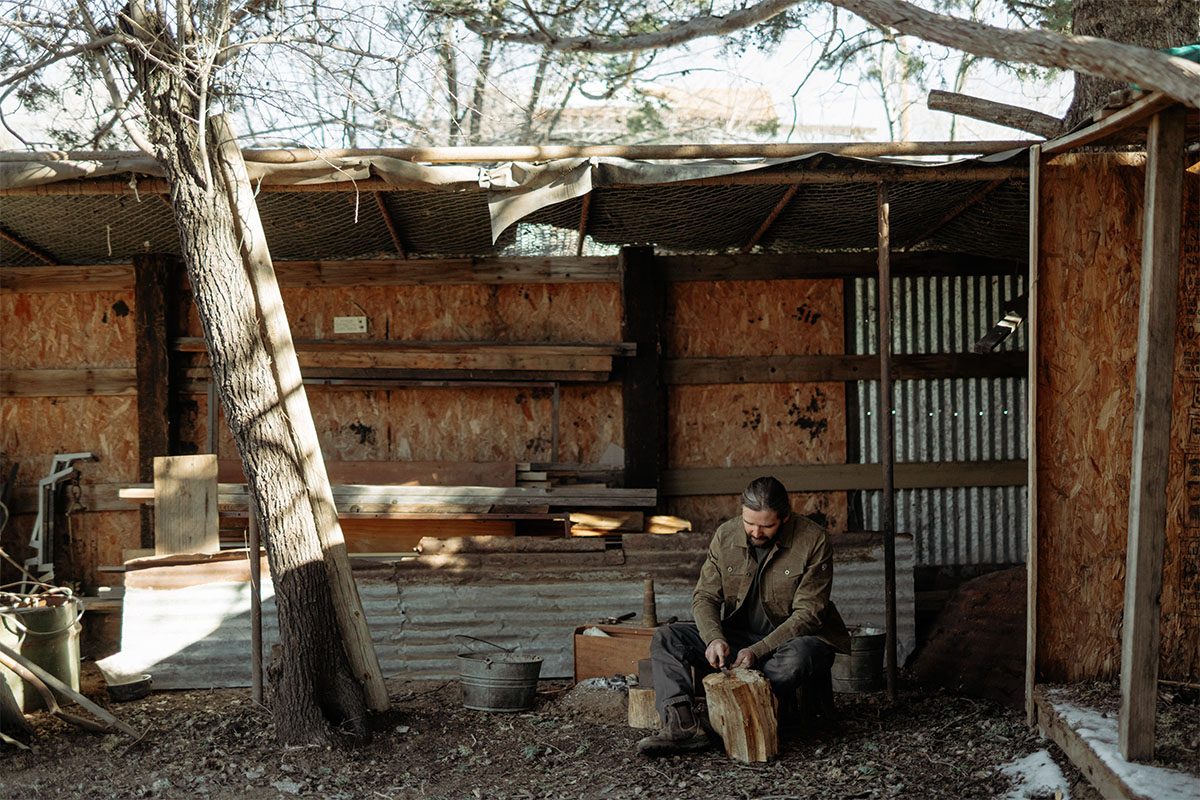
Learning to Make Jewelry
Tobias started making jewelry for fun. He loved the simplicity of turning a natural object he found into an adornment. It began with using abrasive sandstone to shape turquoise into a basic pendant. That expanded into using silver wire to hang the pendant, to learning how to mount a bezel stone with silver solder. He eventually learned how to use modern tools and techniques to make more complicated pieces.
As he became more familiar with the techniques, he began to feel overwhelmed. Torches, kilns, machinery and more – Tobias felt like making jewelry had turned into an industrial process that took him further and further away from the art. He also realized how many good jewelry makers there were using these tools and techniques and wondered how he could ever make his work stand out.
To him, this process didn’t have enough soul. He could get a perfectly cut stone and pure silver delivered to his door. With his background in primitive skills, Tobias looked for a way to become more involved in the process from the very beginning. His mind asked the question, “What would this look like if I didn’t have modern technology?” That’s when he found Tufa casting.
A Jewel from the Ash
Tufa casting is an ancient form of jewelry making. Tufa is volcanic ash that is settled in a sedimentary layer and is eventually consolidated into a soft rock. This rock is carved to make a two-part mold that can be used to cast silver.
The simplicity of this process captivated him. With this technique he could create a piece of jewelry from start to finish with materials found in his backyard. Tobias finds, cuts, shapes and polishes the turquoise. He sources silver coins from antique shops and melts them over an open fire. There are no kilns, torches or buzz from machinery in his studio. Just campfire smoke, maybe a bird song and a warm breeze.
The imperfections in the pieces tell the entire story. He can’t make whatever he wants. Because the process is limiting, he has to constantly experiment, tweak and adapt his designs and ideas.
Our modern intentions of making things better, faster, shinier, and more profitable have in many ways severed us from the beauty and appreciation of the process.
There are easier ways to start a fire, build a shelter and yeah, make a bracelet. But the knowledge of doing things the ancient way reveals a connection to the art that few of us ever get to experience or even admire.
Flicking a lighter to start a fire is easy. Anyone can pitch a tent. But when you strip away the convenience you get to the most simple and pure sense of what it means to be human, to survive.
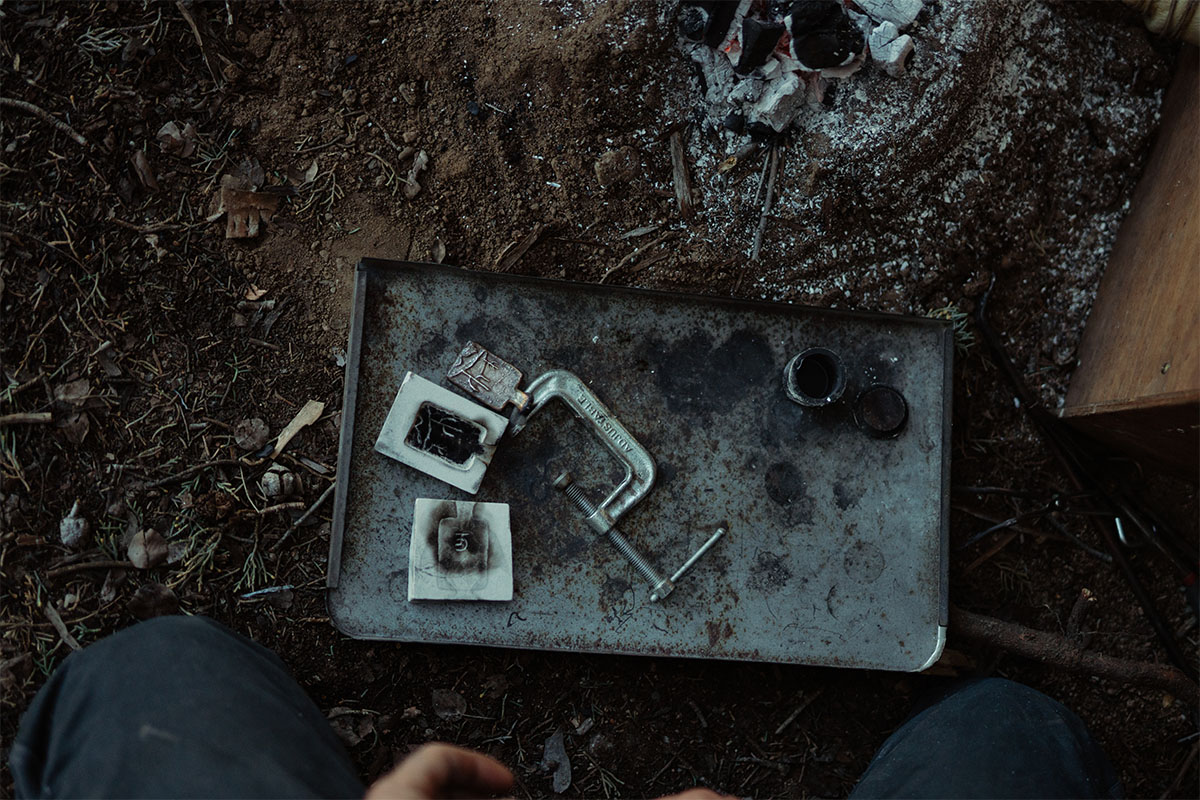
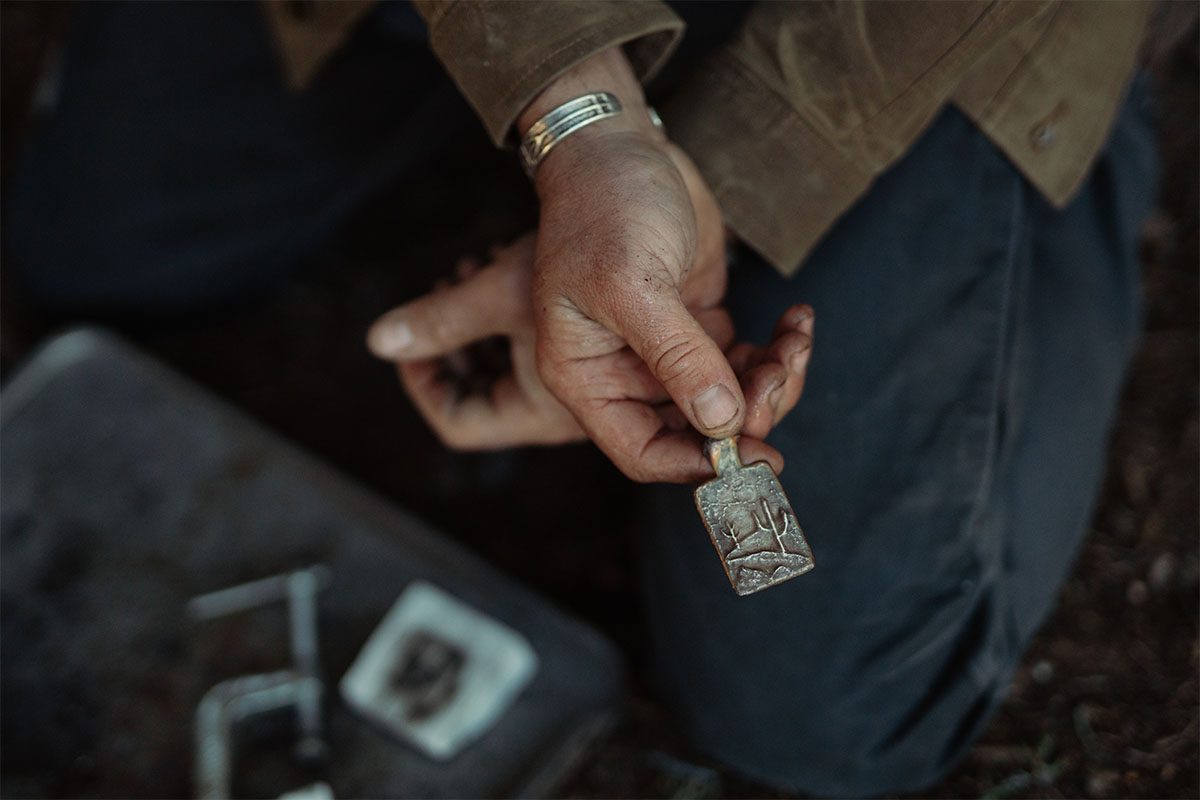
Reconnecting
Through his jewelry, Tobias wants to remind everyone that the process it takes to make art is just as important as the finished product. Admiring the finished piece is just a small fraction of the story and he wants to weave people into the entire process.
Tobias is bringing more beauty to life through his willingness to avoid shortcuts. He believes in encouraging the knowledge and recognition of seeing things for what they are and where they came from. This instills a sense of gratitude that seeps into other areas of our lives and makes us better for it.
Tobias doesn’t need to make jewelry or teach primitive classes to pay the bills. He recognizes this privilege and is grateful he can find a healthy balance between his day job as a biologist and his passions. But his passions set the framework for who he is, what he wants to do and where he wants to invest his time and energy.
He intentionally made jewelry and teaching primitive skills a passion, not a career. He’s trying to reverse the industrial production mindset – he avoids deadlines, inventory and paperwork.
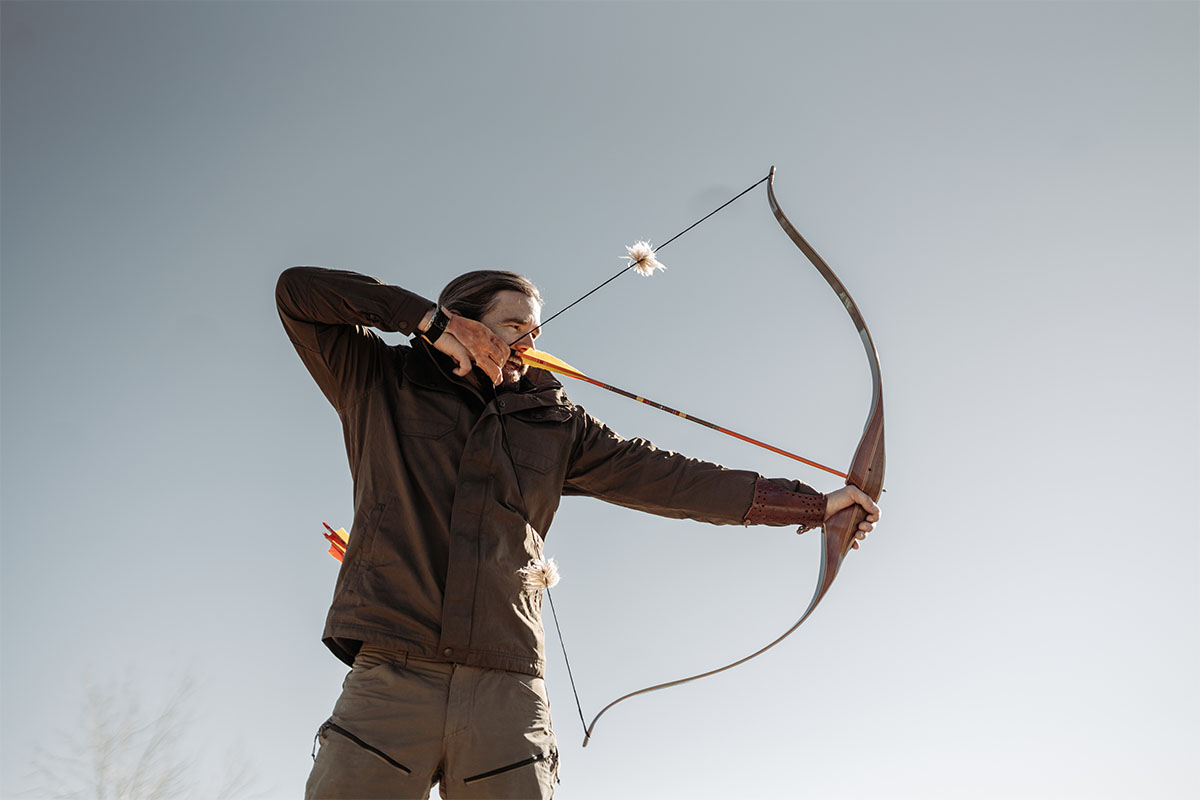
The Beauty of Discomfort
Sharing the primitive knowledge on how to survive in the wild is empowering for anyone willing to listen. We evolved in the wild, our minds, bodies and spirits are most at home there.
Modern life is comfortable, we can all admit. But ignoring ancient life—the lessons and skills that come from it—is a critical error that Tobias and many others are trying to remind us of. The struggle is the process. The process is the art.
Bring things into your life that have a story. Hang or wear artwork that isn’t just nice to look at but reminds you of the person who made it and how they got there. Support artists and companies who don’t take shortcuts.
Keep up with Tobias, his jewelry and adventures online @tobiascorwin.
